藤原実方朝臣

かくとだに
えやはいぶきの
さしも草
さしも知らじな
燃ゆる思ひを
ふじわらのさねかたあそん
かくとだに
えやわいぶきの
さしもぐさ
さしもしらじな
もゆるおもいを
Fujiwara no Sanekata
How can I possibly
Ever describe to you
How my love - so much like
Moxa from Ibuki Mount -
On sufferance burns in me?
Hokusai
Fujiwara no Sanekata (? - 998) was the great-grandchild of Teishinko (poem 26), and some believe he may have been the model for the Hikaru Genji character. The Shuishu contains 67 of his poems. He passed away at Mutsu, where he held the position of Mutsu-no-kami. He was one of the Thirty-Six Immortal Poets.
A note tells us that this poem was the first one sent to the woman the poet just fell in love with.
Hokusai shows us Mt. Ibuki, with in the foreground a shop selling moxa. The sign reads “original pure Mt. Ibuki sun-dried moxa”. Maybe the women are serving yomogi tea to their visitors.
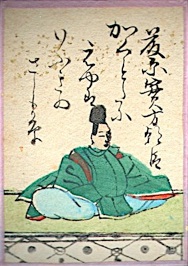
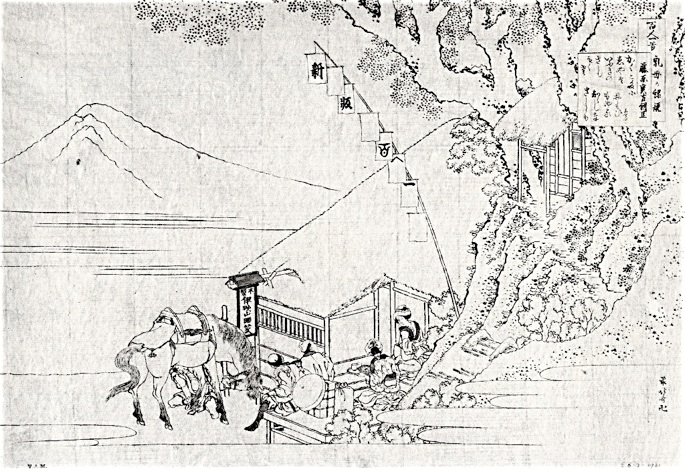

Mt. Ibuki
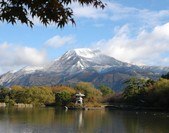
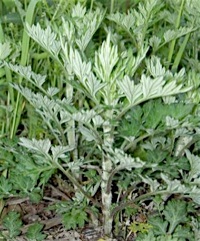
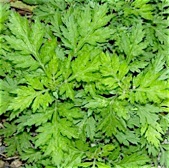
Yomogi
Sashimogusa, yomogi, mochigusa, artemisia princeps, wormwood or Japanese mugwort has been used for medicinal purposes for ages on most continents. In Japan and some other countries it is also used in food. It has a bitter taste. The yomogi grown on Mt. Ibuki was (and still is) used for moxibustion, and is known as moxa.
Ibuki can also be read as iu beki, ‘how should I tell her’. Eyawa in one word means ‘indescribable’. Sashimo-gusa is artemisia, but sashi mo also means ‘even when painful’, and sashimo can mean ‘so much’. The word omohi (desire) contains hi, which is fire. Shiraji is either ‘not known’ or ‘white’. So there is a lot of word play here, and a play with kanji if you care to go that deep; e.g. the first word of the fourth line, sa (‘so’) would be in kanji 然 and repeated in the following line 燃 (‘burn’).
